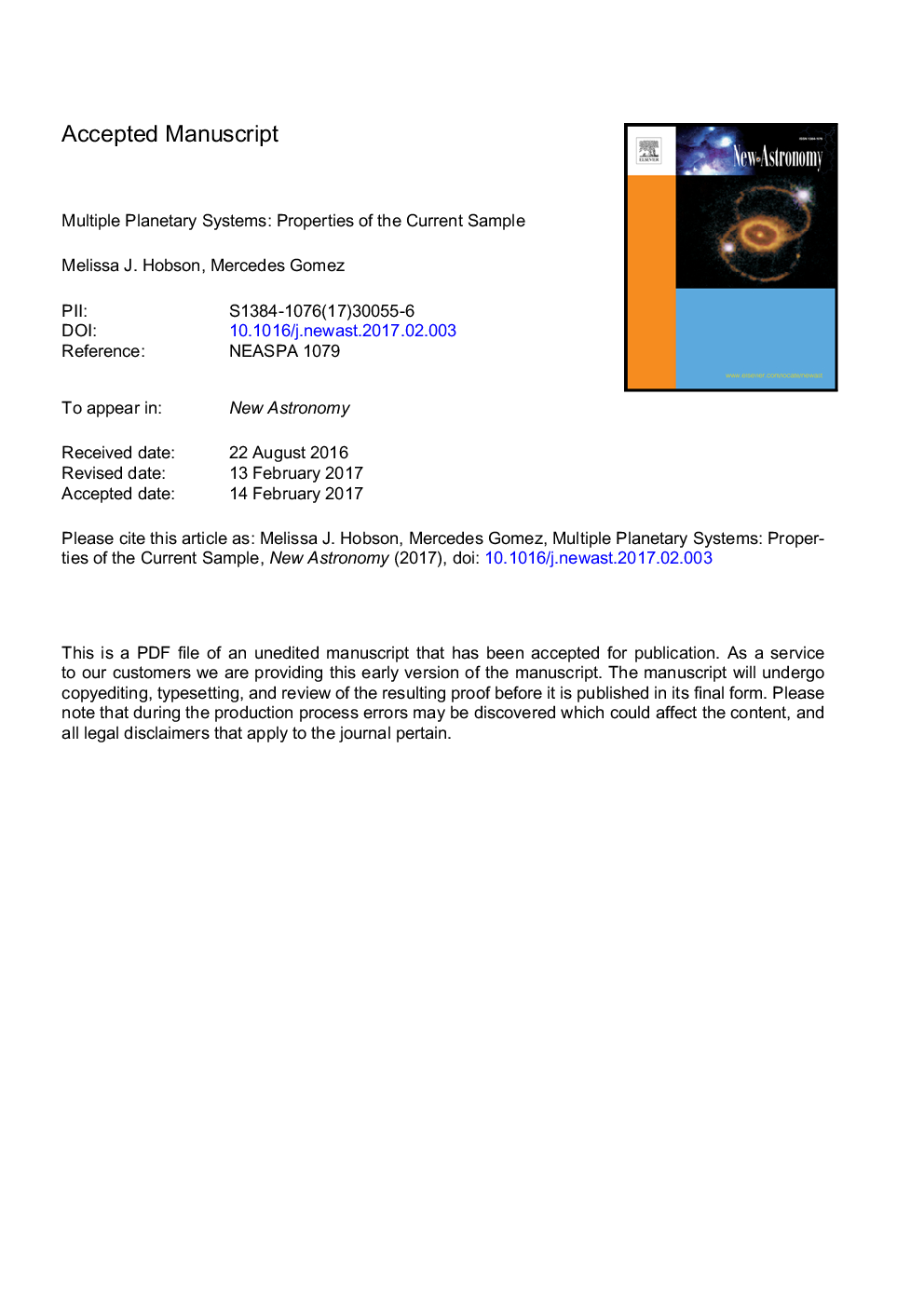| Article ID | Journal | Published Year | Pages | File Type |
|---|---|---|---|---|
| 5487813 | New Astronomy | 2017 | 39 Pages |
Abstract
We carry out analyses on stellar and planetary properties of multiple exoplanetary systems in the currently available sample. With regards to the stars, we study their temperature, distance from the Sun, and metallicity distributions, finding that the stars that harbour multiple exoplanets tend to have subsolar metallicities, in contrast to metal-rich Hot Jupiter hosts; while non-Hot Jupiter single planet hosts form an intermediate group between these two, with approximately solar metallicities. With regards to the planetary systems, we select those with four or more planets and analyse their configurations in terms of stability (via Hill radii), compactness, and size variations. We find that most planetary pairs are stable, and that the compactness correlates to the size variation: More compact systems have more similarly sized planets and vice versa. We also investigate the spectral energy distributions of the stars hosting multiple exoplanetary systems, seeking infra-red excesses that could indicate the presence of debris disks. These disks would be leftovers from the planetary formation process, and could be considered as analogues of the Solar System's Asteroid or Kuiper belts. We identify potential candidates for disks that are good targets for far infra-red follow-up observations to confirm their existence.
Related Topics
Physical Sciences and Engineering
Physics and Astronomy
Astronomy and Astrophysics
Authors
Melissa J. Hobson, Mercedes Gomez,
